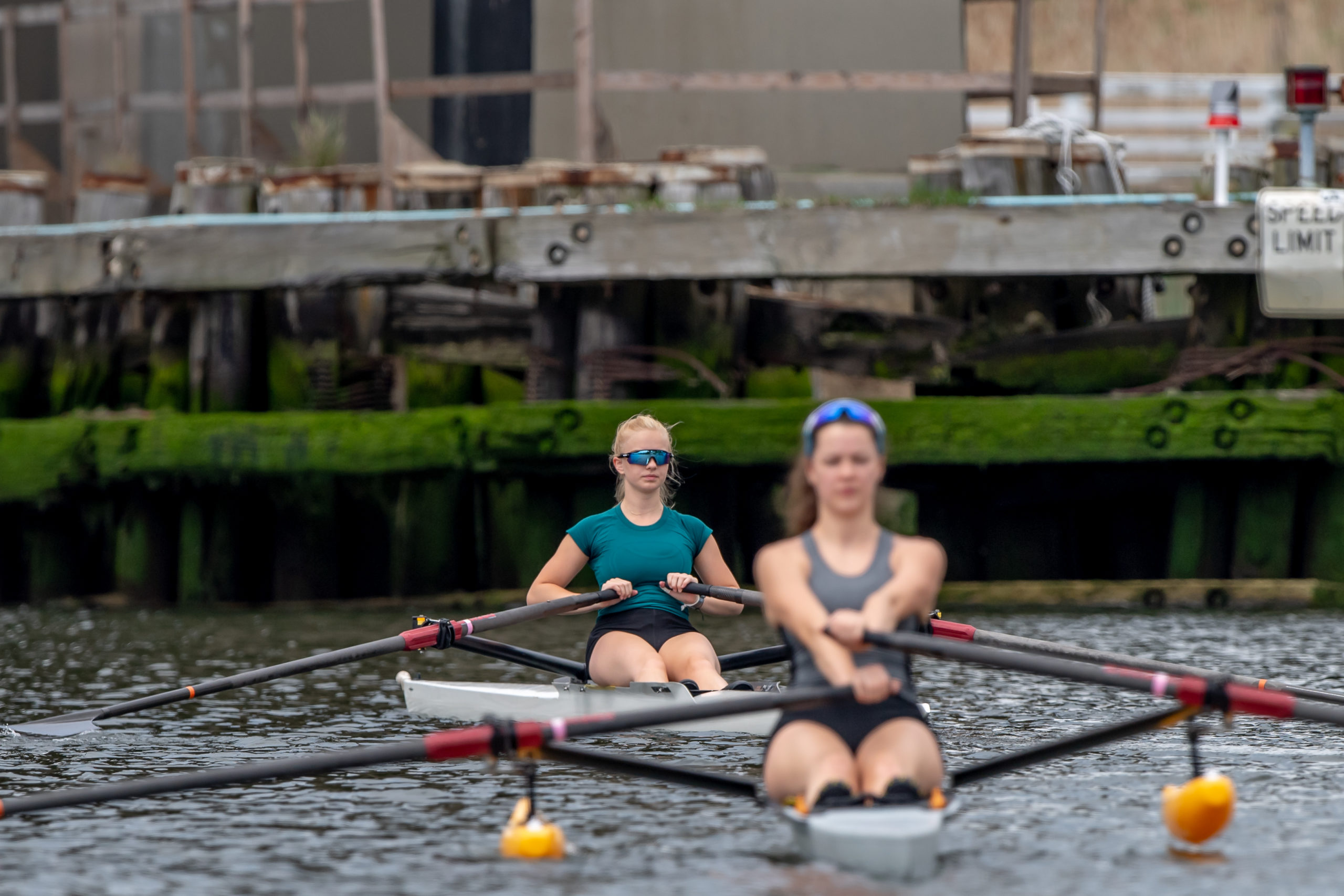BY RICH DAVIS
PHOTO BY ED MORAN
To continue reading…
Register for free to get limited access to the best reporting available.
Free accounts can read one story a month without paying.
Register for free
Or subscribe to get unlimited access to the best reporting available. Subscribe
To learn about group subscriptions, click here.
Already a subscriber? Login
During their first few outings, it is not uncommon for novices of any age to smash their knuckles into their knees. Worse than the bruises, however, is what this does to the run of the boat and the timing of the recovery.
Hands should always lead away from the release, with the back following as the arms extend. When the hands are over the knees, the back should be in an upright position, with the arms partially extended and the knees down. The speed at which the hands move to the knees from the catch sets the speed of the recovery. As a general rule, the hands should move away from the body as quickly as they came in during the drive. When the hands pass just beyond the knees, the knees begin to rise. Their speed sets the speed of the seat as it slides toward the catch. The combined movements of the hands, arms, and knees should blend together so that the blade travels to the catch at a consistent speed and the boat moves smoothly beneath the rower(s). You can practice recovery timing and knee speed on the ergometer. Just remember to always row the way you would on the water.
Keep these points in mind:
* The hands should be behind the knees at the beginning of the recovery.
* The hands should lead the recovery.
* When the back has just begun to come from the layback position, the arms are still moving toward full extension.
* When the hands are over knees, the back should be over the hips.
* After the hands pass beyond the knees, they should begin to rise.

